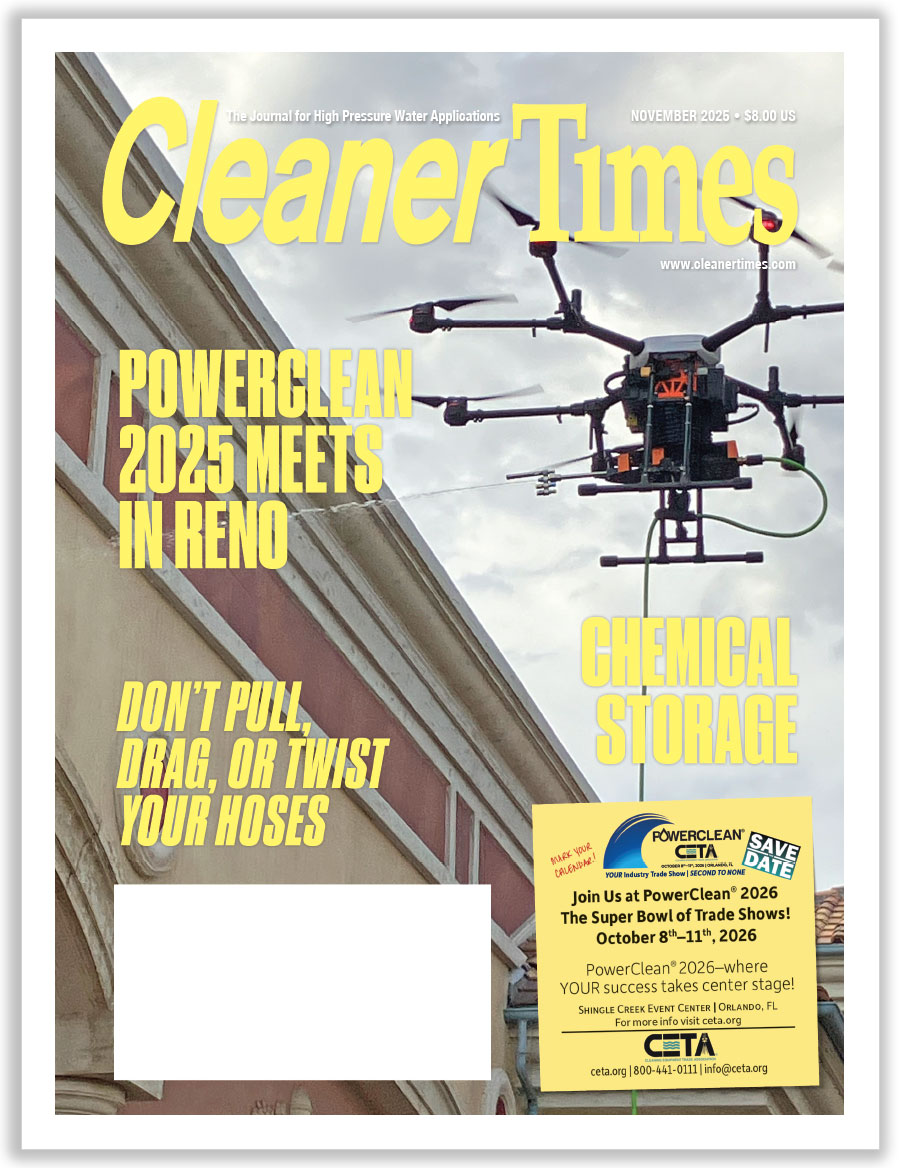
Graffiti… Is It Art?
By Diane M. Calabrese / Published March 2018

Is it art? The National Endowment for the Arts, the National Education Association, and many others say “yes,” graffiti is art.
Arts and education groups across the nation have encouraged both the creation and the exhibition (inside museums) of graffiti, often as part of a larger embrace of street art. While graffiti refers to the inscriptions and drawings on public surfaces— walls, sidewalks, and signs—street art further encompasses three-dimensional creations using materials of all sorts, including discarded items.
Works of art always reduce to an eye-of-the-beholder appraisal. Yet how do communities and property owners decide whether they should—or can—remove graffiti? Really, is it art or not?
Perhaps this will help: Equipment Trade Service Co. Inc., the manufacturer of two graffiti-removal products, Tagaway (for smooth and painted surfaces) and Taginator (for masonry), offers a FAQ that cites “permission” as the difference between art and graffiti. David Hart, owner of the company, shares some of his expertise on graffiti removal with us.
“We always recommend testing a small spot” before using a removal product, says Hart. Many factors affect the way paint or other markers used to produce graffiti adhere to a surface. For example, marker ink on masonry walls penetrates into the porous bricks.
A stucco wall may have been painted. In that case, it’s important to determine the kind of paint that was used as a coating on the wall and how long ago the coating was applied. Perhaps the wall is south facing, and the paint on that wall has oxidized. The graffiti itself may be latex-based and the coating on the wall enamel.
The more information a contractor has prior to devising a removal strategy, the better a match can be made between method and objective. Hart notes there are graffiti-proof or resistant coatings. “Our philosophy is that you can’t graffiti-proof every surface,” says Hart.
Consequently, the optimal approach to graffiti removal is to find the most cost-effective and efficient product to restore a surface to its unmarked state. “Value is important,” says Hart.
Purchasing agents for municipalities look carefully at the cost of a product, says Hart. Contractors benefit by taking the same approach.
“Look at the cost per square foot to use the product,” says Hart. Give careful attention to coverage that can be obtained per container.
And evaluate all the ancillaries and their cost—including risk. Is special personal protective equipment, such as specific gloves, required to apply the product? That adds cost.
“Also, it’s very important a product is not going to be flammable, since fumes can accumulate in a contractor’s van,” says Hart. “Biodegradability is important, too.”
To be sure, the Environmental Protection Agency (EPA) takes an interest in the volatile organic compounds (VOCs) potentially released in the removal of graffiti. Any method that stays clear of VOC release earns high marks from the EPA.
Add time or re-dos to the removal effort, and the cost to a contractor goes up. “Value” must be intricately tied to effectiveness of product, says Hart. “It’s very important a product is going to work in a single application.”
The faster an effective product can be applied, the greater still is the cost-effectiveness. So, consider how a product is applied. “A liquid product with a pump-up sprayer is at least twice as fast to apply,” says Hart.
The aforementioned FAQ at https://www.taginator.com/FAQ-for-our-Graffiti-Removers-s/115.htm at the website for Hart’s company distinguishes between the two graffiti-removal products the company offers. And it answers questions, such as when to wipe away and when to rinse, how to select gpm and psi when using a pressure washer for rinsing, when to use hot water, and much, much more. Hart welcomes the submission of questions because the company strives to make the FAQ as robust as possible.
No To Abrasives
Most homeowners in urban areas have had experience finding tags on their sidewalk or driveway. They might ignore them, if the scribbling is not obscene. But given a vulgar image or phrase, or an image unlikely to be the next Mona Lisa, the owner might try to abrade it with sandpaper.
Do abrasives have a place in professional removal of graffiti? “Sand-blasting, soda blasting, and any type of abrasive blasting is often presented as a solution to removing graffiti,” says Adam Kopcho, director U.S. operations for Urban Restoration Group U.S. Inc., the company that makes World’s Best Graffiti Removers products and is based in Glendale, CA.
“However, in truth no matter what you are blasting—sand, soda, walnut shells, glass beads, or even high-pressure water—the only way these systems remove graffiti is by removing a little of the substrate each time,” says Kopcho. “Apart from being slow and causing damage, they can make it ten times harder to remove spray paint the next time around.”
Kopcho explains that his company’s three-product system “is designed to remove all types of graffiti from all substrates without leaving shadows or causing damage to substrates.” The system provides an added value in that it comes with instructional tools.
“Our system is easily learned and quite easy to train others in with our professional training video and safety training manual,” says Kopcho. “It contains all the tips and tricks we use daily to ensure quick and perfect removals.”
Kopcho is another member of the graffiti-removal products industry who is not entirely sanguine about “sacrificial” coatings designed to speed graffiti removal. “Permanent ‘film forming’ coatings are very often recommended as a preventative solution,” he explains. “While they can make it easier to clean graffiti in the initial stages, they can cause major problems in the long run as they go cloudy, peel, or delaminate due to the effects of UV sunlight, changing ambient temperatures, pressure washing, and cleaning with solvents.”
Some of us have read murder mysteries where the crucial clue came from a mark from a shoe. That’s good detective work, and it illustrates a point about toughness.
“Solvent-based inks, leather dyes, and boot polish can really wrap around and bite into porous substrates such as concrete, limestone, and marble, or even burn into coated surfaces such as a powder coat of paint,” says Kopcho. “This can result in a residual stain or shadow.”
Kopcho’s company offers a product, Feltpen Fadeout, designed just for such tough markings. “We like to call it ‘the missing link in professional graffiti removers,’” he says.
Economy of scale helps the contractor bolster the bottom line. And Kopcho recommends that in addition to seeking the best match of product and task, the contractor not overdo the rinsing.
“Without doubt, the most ideal machine for the professional graffiti remover is a hot water pressure cleaner around 2000 psi at three gallons per minute,” says Kopcho. “Any higher pressure for graffiti removal is a complete waste of money, as the machines are used only as quick release rinse of graffiti which has already been dissolved or softened by our removal products.”
Kopcho believes firmly in hot water for rinsing. “Even though the secret is in the chemicals used, you will find that hot water for rinsing has 100 times the energy of a cold water pressure cleaner,” he explains. He adds that the hot water provides just enough energy to remove the last bits of graffiti residues that would otherwise remain.





